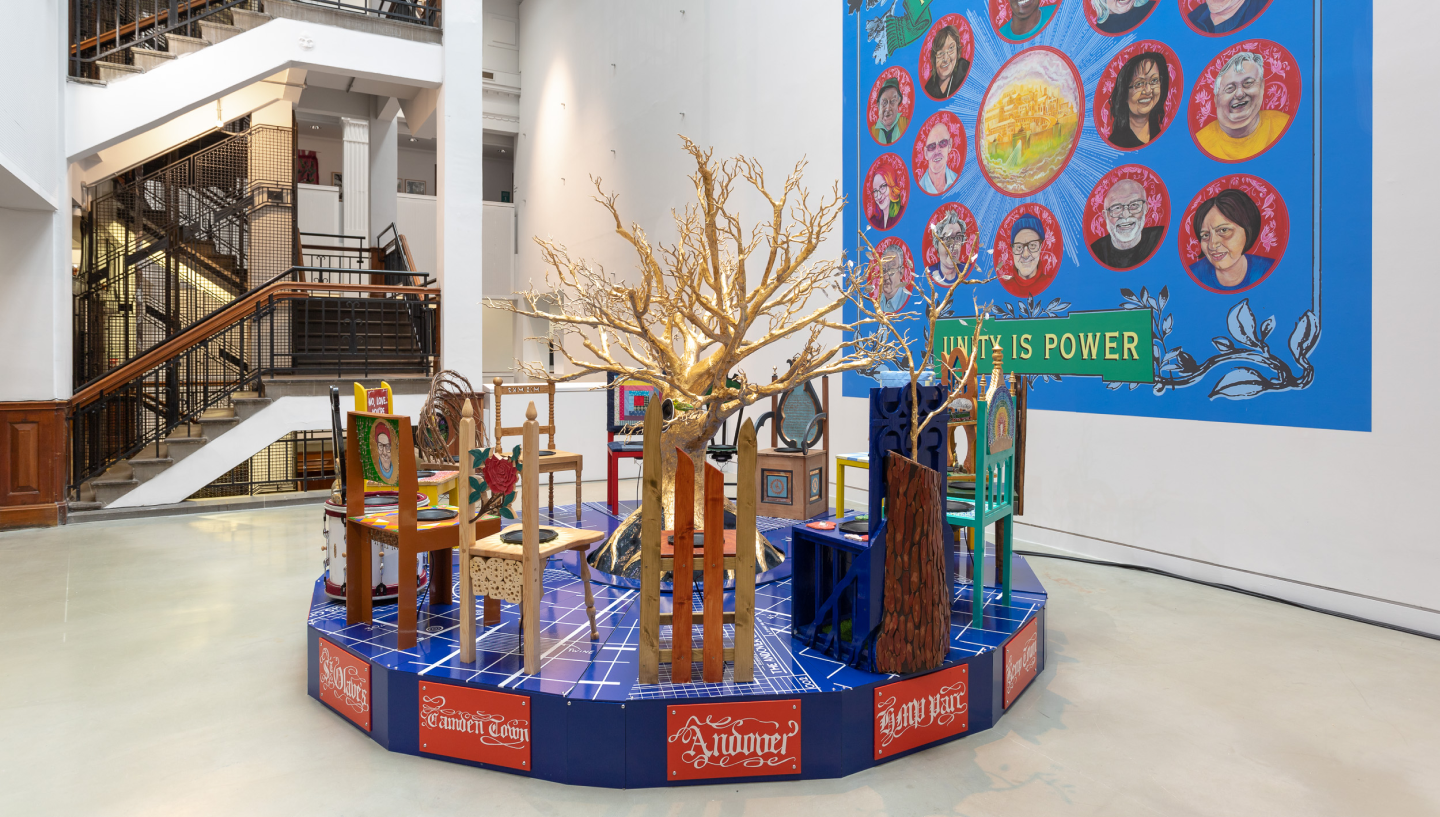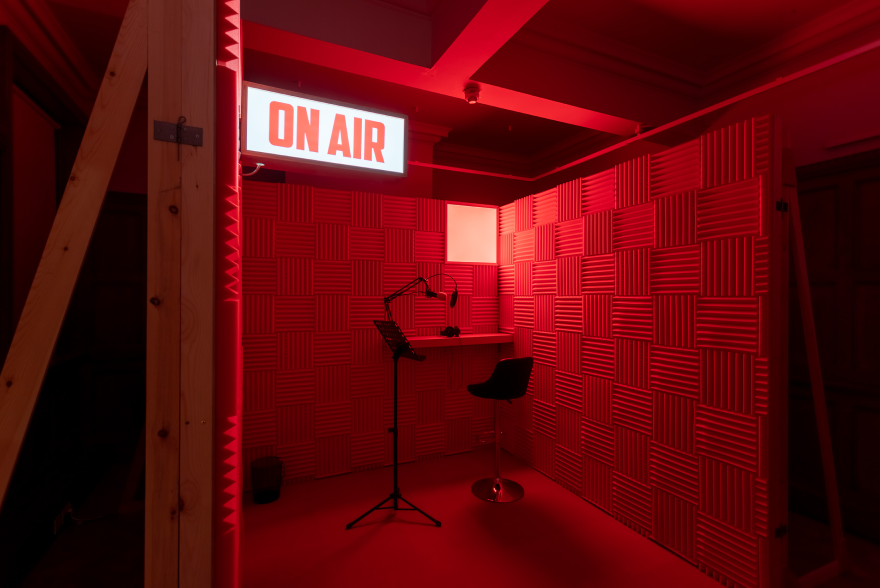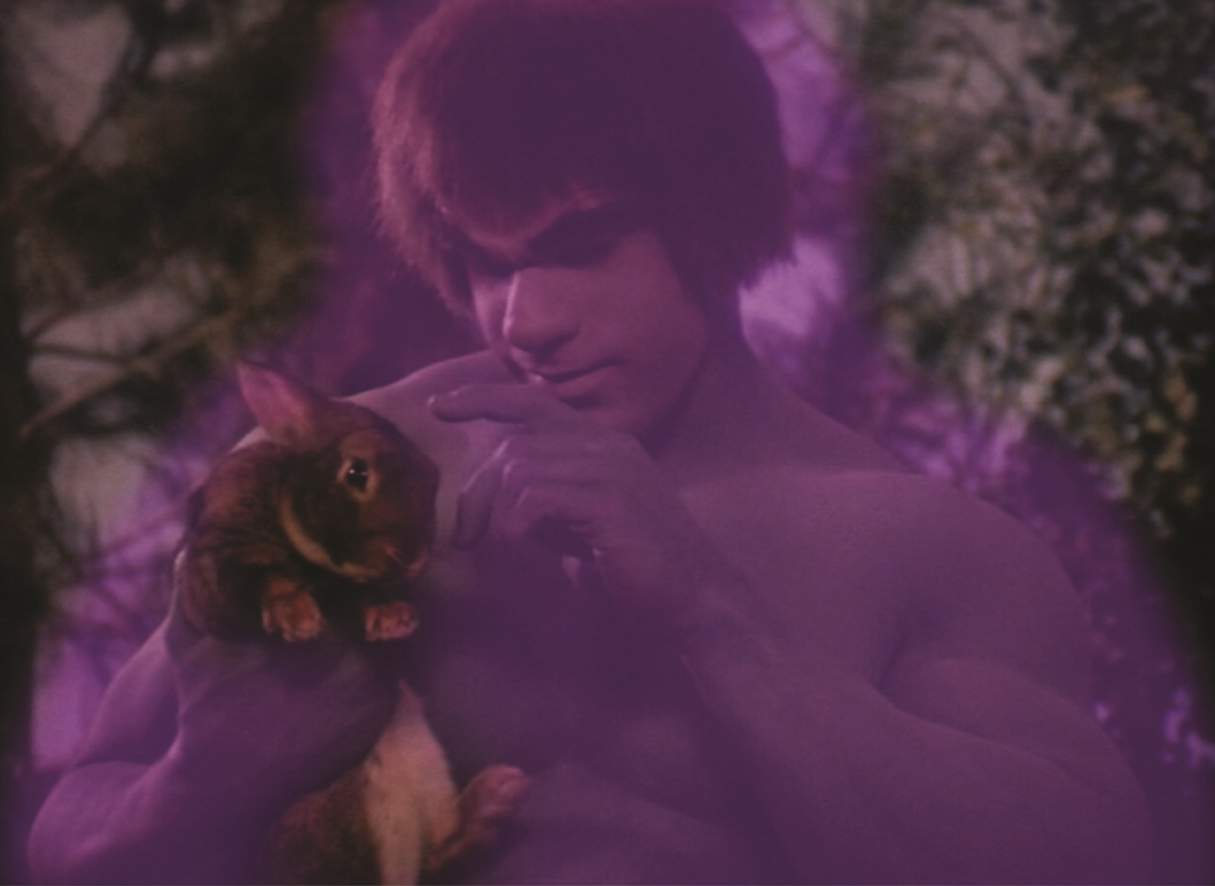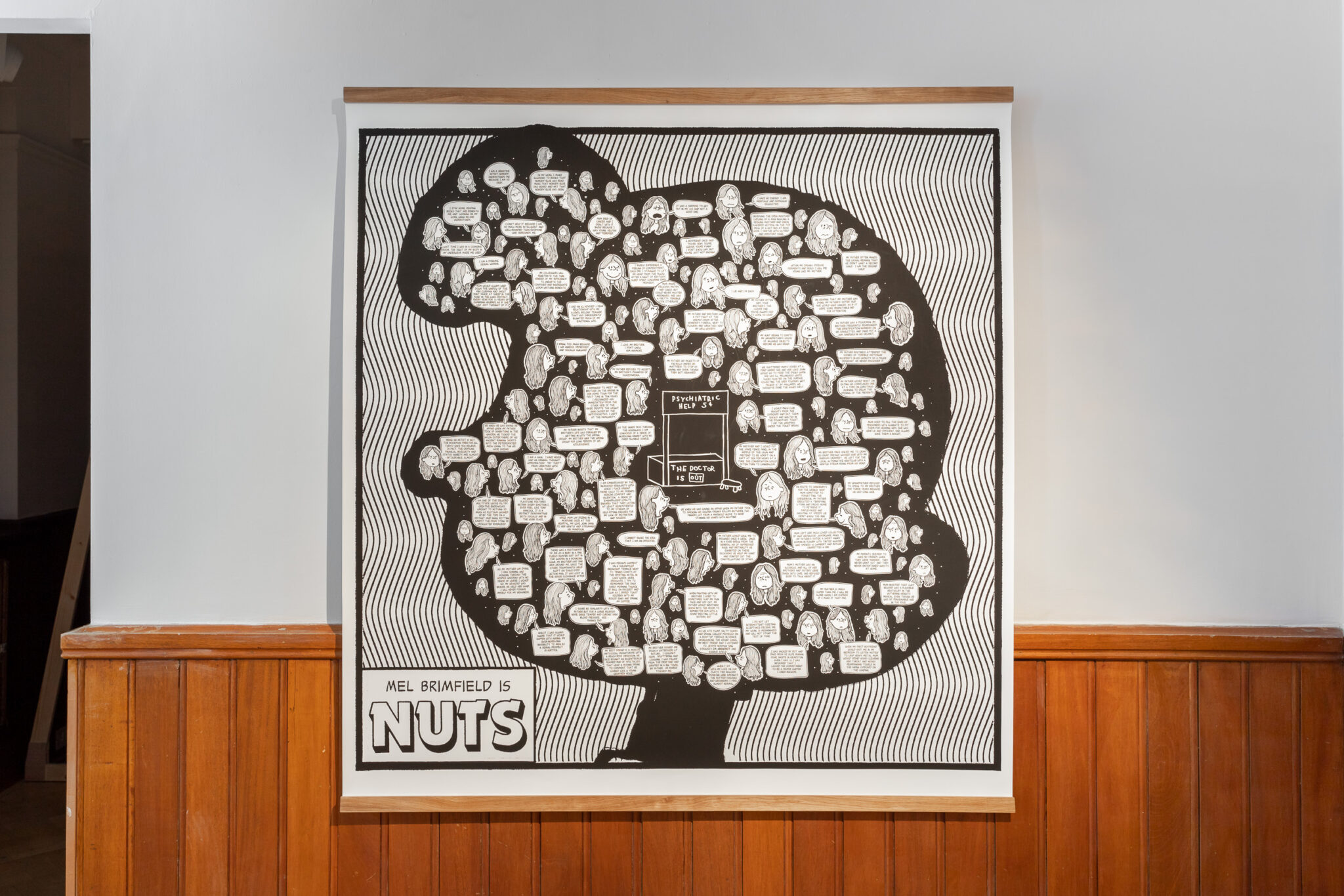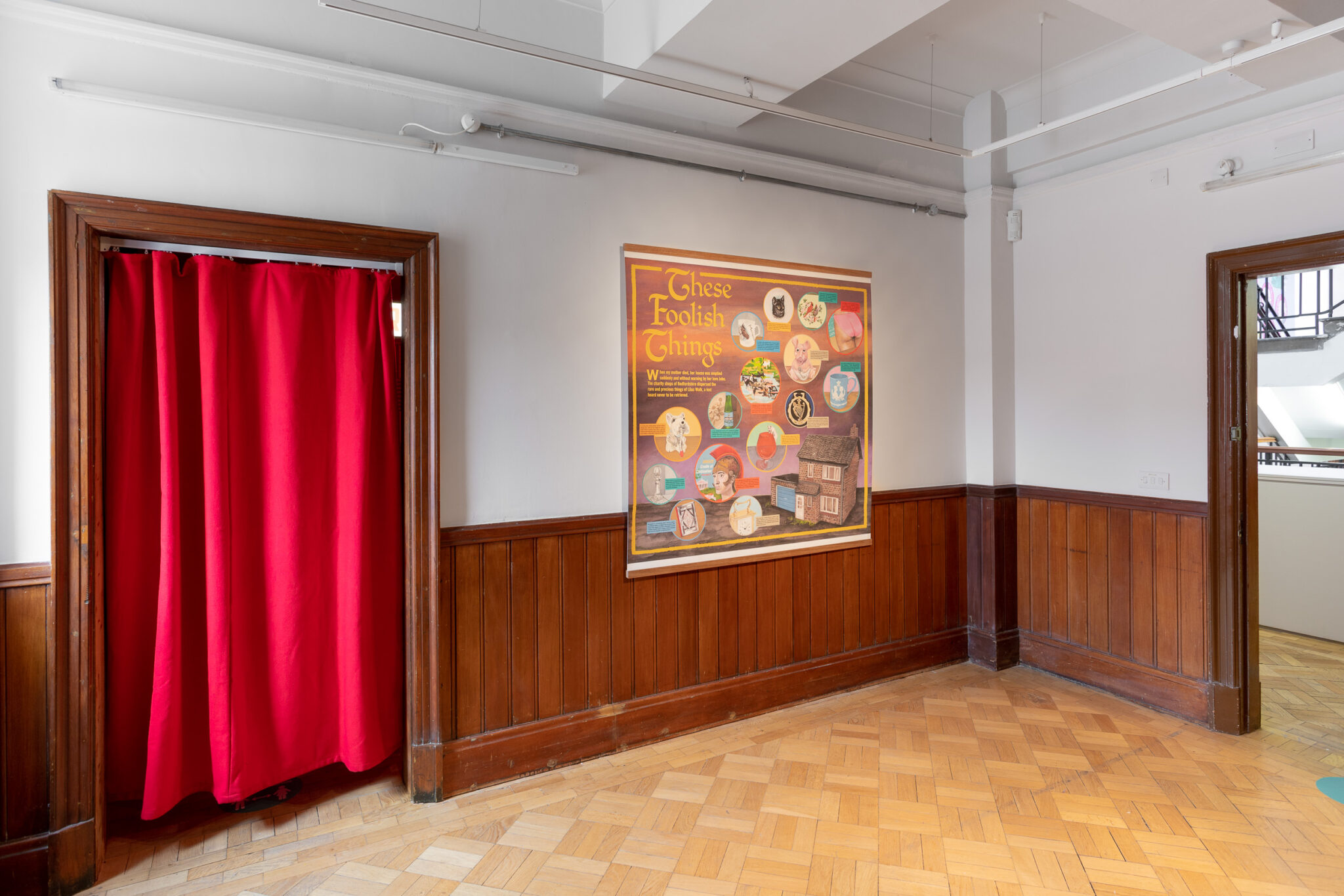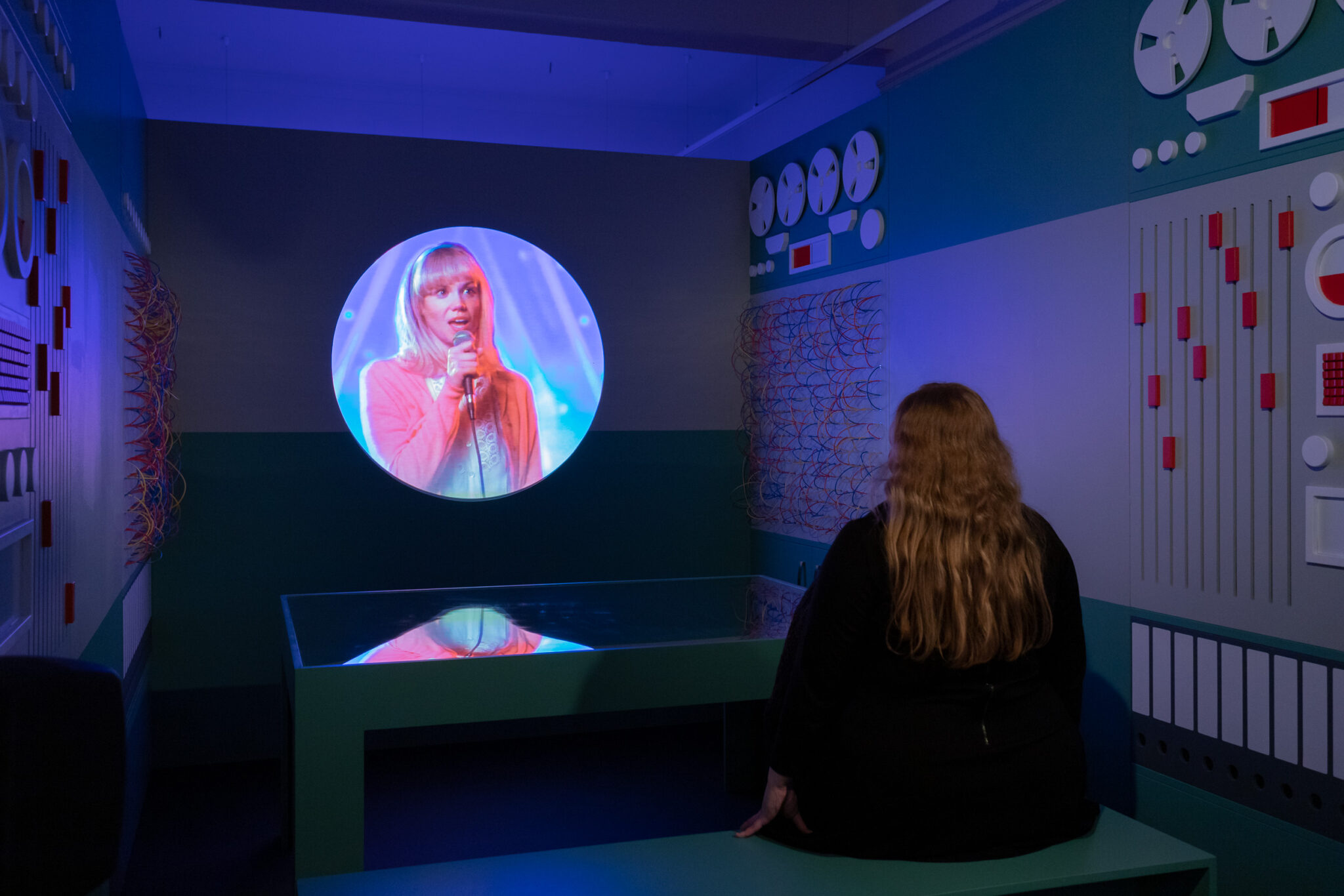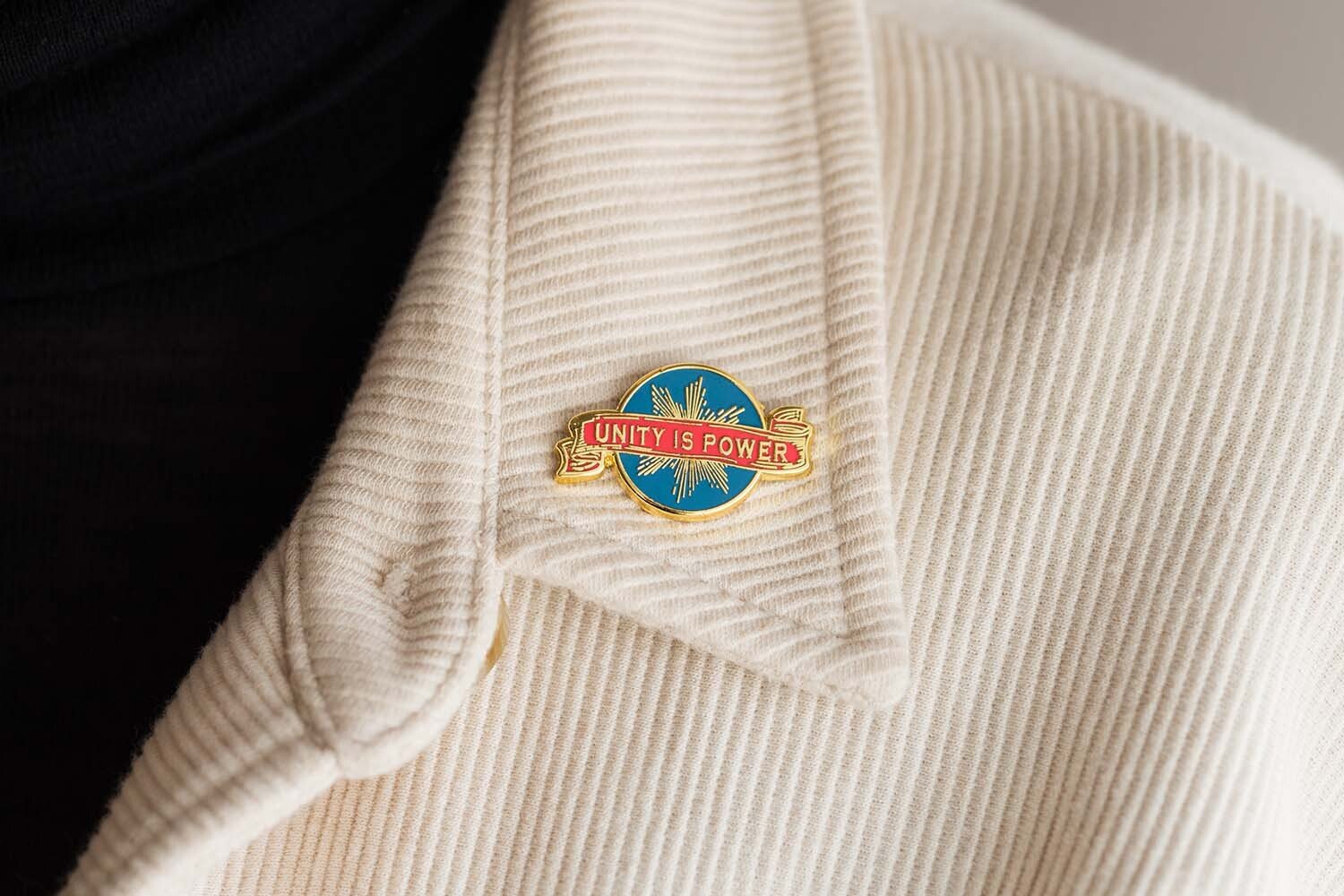From this world, to that which is to come took its title from John Bunyan’s 1678 parable The Pilgrim’s Progress, which describes a fictional pilgrimage from ‘The City of Destruction’ to ‘The Celestial City’. Brimfield reimagined this tale as a loose allegory for a collapse of mental health and the fraught journey to recovery.
The exhibition marked the culmination of two years’ work, based on a research residency at Bethlem Royal Hospital’s National Psychosis Unit and Kings College Institute of Psychiatry, Psychology and Neuroscience in 2018–19. Brimfield conducted interviews and workshops, collecting personal testaments from patients, carers, nursing staff, neuroscientists, clinicians and activists. The resulting series of works explored the alienating effects of mental ill health and treatment at an individual, familial and societal level, whilst presenting a celebration of the radical potential of collective creative action and kindness.
After nearly a year’s delay imposed by the global pandemic, the opening of this timely exhibition was an urgent reminder of our deep need for community. During lockdown, Brimfield produced an additional series of introspective, personal works reflecting on her own lived experience of mental illness.
Central to the exhibition was STAND, 2020, a sixteen speaker sculptural audio installation in The Tetley’s Atrium, co-produced with composer Gwyneth Herbert. It housed a complex choral composition responding to a poignant spoken word recitation by a Bethlem inpatient recorded by Brimfield during her residency. This epic sound sculpture was built and performed by over 100 collaborators, including UK Men’s Sheds and Men’s Sheds Cymru, mental health service users and staff, and prison inmates. Through this work, Brimfield directly united and foregrounded the community groups and networks offering vital support at a time of crisis in the provision of effective mental health services.
The exhibition also featured a constellation of audio monologues, fragmented theatrical sets, moving image work and large-scale drawings, often casting visitors as both audience and performer in a series of listening stations as static tableaux. Combining autofiction with adaptation, a cast of literary and popular cultural characters performed skewed narratives drawn from Brimfield’s own familial history of psychosis, depression and anxiety to darkly humourous, melancholy effect.
Tintin’s adventures were compressed to an absurdist paranoid fantasy of conspiracy and pursuit acted out within the confines of Bethlem Hospital. The artist consulted Peanuts character Lucy in her psychiatrist’s booth for therapy. Bunyan’s Giant Despair was cast as Brimfield’s father as a monstrous purple Hulk in a trilogy of works enacting a comic book origin story of misery, loss, rage and transformation. Elsewhere, a hapless actor in a vocal isolation booth struggled to record an audiobook of Kafka’s Metamorphosis whilst slowly morphing into a giant cockroach, menaced by a malign foley artist.
This personal, impactful body of work explored the sometimes toxic legacy of mutually rehearsed family narratives on mental health, and of our vulnerability and isolation in the face of perceptual and cognitive malfunction.
The exhibition was produced in collaboration with Kings College Cultural Community; Arts & Heritage with Kelham Island Museum; Chapter Arts Centre; Attenborough Arts Centre and Somerset House Studios. With support from The Arts Council of England, Kings College Cultural Community and Arts and Heritage.
